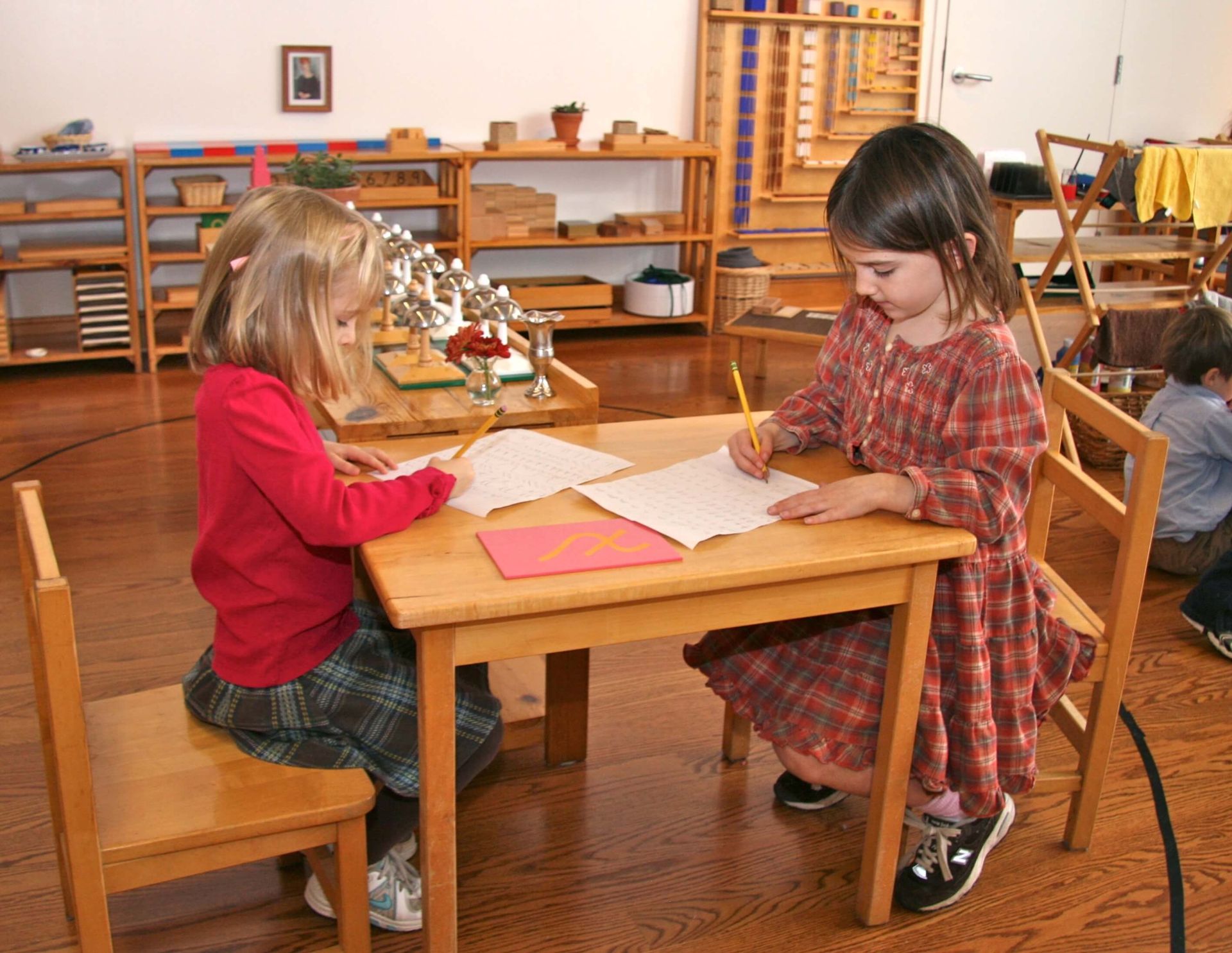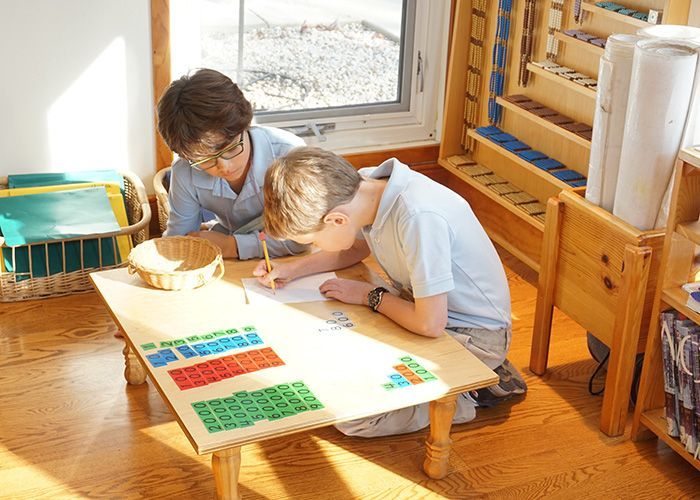
In this article we examine the Four Planes of Development observed by Dr. Maria Montessori, describing some of the hallmarks of each plane and how Montessori education is designed to meet the needs of children in each plane. For a more general overview of how Montessori education is informed by children’s developmental needs, see our previous post, An Education that Matches Children’s Development.
As an educational approach, Montessori is unique in taking child development into account at every level: physical, psychological, intellectual, and social. This approach is a product of Dr. Montessori’s keen observations of children from a range of social classes, in many countries, on three continents, over more than 40 years. Montessori educators today continue to make observations that are consistent with her findings a century ago.
Dr. Montessori found that all children exhibit characteristics and needs for healthy development in four distinct stages, or planes of development. Understanding and recognizing these planes of development provides parents and educators with a guide to how we can best help our children. One way you can understand, identify, and remember these four phases is by thinking of the questions children seem to be asking us with their behaviors and developmental needs: “What is That?” between ages zero and six, as children explore the environment around them; “Why is It?” between ages 6 and 12, when children explore the abstract world intellectually; “Who Am I?” between ages 12 and 18, when children develop their unique adult identities; “What Will I Do?” between ages 18 and 24, when our children turn their attention to making unique contributions to their world.
The First Plane of Development (Birth to Age Six): “What is That?”
“There is in the child a special kind of sensitivity which leads him to absorb everything about him, and to adapt himself to life.” (Montessori, The Absorbent Mind)
Infants and young children are in a “discovery mode.” They are driven, as if by an internal force, to interact with the environment and absorb all the information about the world that they can get. Think about it: Infants want to explore with their mouths and hands; they are constantly in motion, making sounds and listening, looking everywhere. They want to touch everything they can, to taste, to move. Infants and young children acquire information about the world primarily through their heightened senses of touch, smell, sound, sight, and taste. It is naturally a self-centered time because little children have an immense task to focus on: building the foundation for a life, a body, and a personality.
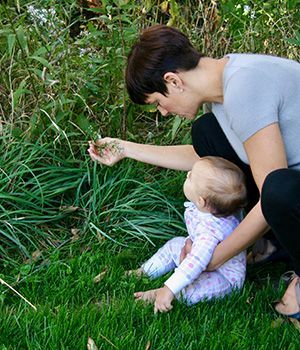
From her observations, Dr. Montessori deduced that young children have absorbent minds that can soak up incredible amounts of information, seemingly effortlessly by comparison to older children and adults. Young children acquire language, the ability to walk, dress themselves, etc., and as a result, function as humans on a basic level, all in the first few years of life. Children under age six can do this because of the outstanding capacity of their young brains to make millions of neuronal pathways. At no other stage of life do we develop so rapidly and in such major ways.
Young children ask what everything is, in a constant quest for words. They seem to want to possess their environment for themselves, and so ask for the names of—and essences of—everything around them.
The Educational Environment for The First Plane of Development
If we keep the young child’s quest in mind, we see that infants and young children need us to support them by providing environments that are rich in reality, culture, communication, nature, and the best of human interactions. We can help young children by removing obstacles so that they can be in direct relationship with the surroundings they so eagerly want to explore.
Adults must be models of behavior for children in this absorbent phase. We want to give young children the chances to move their bodies and thus learn to control their movements, to do things to care for themselves and for their environments. Through such interactive experiences, young children develop self-esteem, become more and more independent, and form a sense of belonging to their community as contributors, through their physical actions.
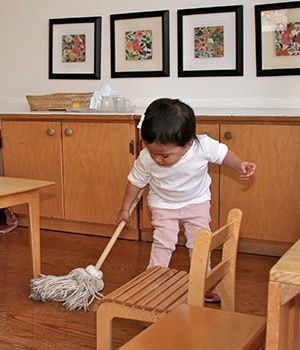
Dr. Montessori designed the learning environment at school with appealing activities in our Young Children’s Community and Primary classrooms. These involve practical life activities that are purposeful and real and sensorial materials that help children refine their senses and learn the names for comparisons such as heavy, light, thick, thin, and the degrees of such qualities, such as heavier, lightest, thicker, thinnest, and so on. While making sense of the impressions they are collecting, young children crave physical and sequential order; in our classrooms, there is a place for each item, and we present things in a simple, attractive order. We offer many opportunities to develop motor control and the ability to concentrate, so our young children can become the masters of themselves in our classrooms. Through all of these carefully designed activities, our youngest children build themselves, naturally and joyfully.
The Second Plane of Development (Ages Six to Twelve): “Why Is It?”
“A greater curiosity arises, which can never be satisfied; so will last through a lifetime.” (Montessori, To Educate the Human Potential)
Around age six or so, we see some striking changes occur: children’s hair becomes darker, their limbs become more elongated, their knuckles stand out where dimples may have been before, their adult teeth begin to replace their “baby” ones, the proportion of their heads and bodies changes, and they do not get sick as often. Cognitively, six-to-twelve-year-olds can imagine things that they cannot see (fantasy books like Harry Potter appeal), and they can reason (they want to find out why the earth goes around the sun, not just that it does). They seem to want, more than anything, to be in groups of peers. They are practically obsessed with rules and social behaviors, they want to understand right from wrong, and they want to see justice done—so they tattle on each other to see what the adults will do. They make up clubs, they exclude some children and include others, and they worship their personal heroes like sports figures, historical figures, or fictional action figures. This stage of life is when important aspects of social organization are established in children’s development.
It is also a time of rigorous mental work: children in the second plane of development are fascinated by information and have multiple interests. They seem to want to be everywhere at once, sometimes leaving a mess in their wake! The attention to detail that attracted them in their prior years now morphs into a desire for efficiency and more abstract thinking. They delight in making inferences and connections between bits of information. This is an important time of consciously creating their own organized structures of knowledge.

The Educational Environment for the Second Plane of Development
Montessori designed a learning environment that would appeal to the children’s need for rich intellectual stimulation, collaborative work, and opportunities to develop their relationships, their abilities to empathize, and their personal moral frameworks. The environment encourages the children to ask “Why?” and to seek out the answers to their innumerable questions by exploring the world of information.
The Montessori classroom for children ages six to twelve encourages—and in many cases, necessitates—that children work together collaboratively in pairs or small groups, so that they can experience and practice how to do so effectively. This is a critical aspect of this stage of development. Instead of fighting against the urge to be together, Montessori capitalizes on this sensitivity by giving productive work as the central focus for learning social interaction on a deeper level. These experiences are necessary because they give elementary-aged children opportunities to think about and navigate the abstract world of interrelationships and human nature.
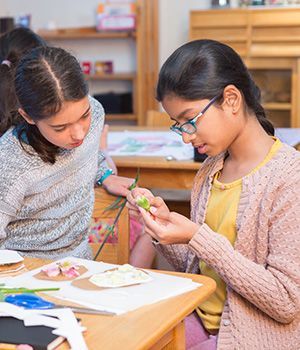
Intellectually, we present aspects of the abstract world to Montessori students as a web of connections and historical structures that enable them to create their own unique organizational logic. Through stories of the beginnings of our universe, life on earth, human history, man’s creation of written language, and man’s discovery of the mathematical world, children’s imaginations are stirred and their awe is awakened, inspiring them to explore and acquire as much knowledge as they possibly can. To watch the children’s enthusiasm and drive as they experience this quest is amazing!
The Third Plane of Development (Ages Twelve to Eighteen):
“Who Am I?”
“…This would result in a ‘valorization’ of his personality, in making him feel himself capable of succeeding in life by his own efforts and on his own merits and at the same time, would put him in direct contact with the supreme reality of social life.” (Montessori, From Childhood to Adolescence)
Dr. Montessori observed dramatic physical and psychological changes occurring at approximately age twelve and recognized the need for specific support in this stage. Dr. Montessori called adolescents “social newborns” who undergo a kind of “rebirth” as their now confident, capable, fully-grown childhood selves morph into newly developing adult bodies and minds.
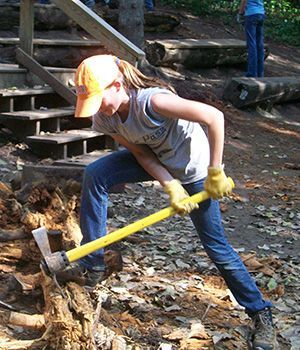
Adolescents do not want to be treated as children anymore; they are eager to embark on their journey into the adult world. They are highly sensitive and easily hurt, as if nature gives them heightened awareness to ensure that they not miss any of the subtleties in the “traffic signals” of social interactions that they will need to understand as adults. This intense insecurity is why young adults need to have authentic, confidence-building experiences where they face concrete challenges and learn to overcome them in supportive environments through their own effort. Doing so repeatedly helps adolescents build their personal repertoires of strengths for adult life.
This is a fragile time physically, when children get sick more easily again, and feel alternately and abruptly energized and then tired, because they are growing rapidly and changing into adult bodies. They need support to experience risks and gain confidence, but also to develop the empathy they are alerted to at these ages. They need close friends and a supportive, team-like community while they are defining themselves. This is the beginning of the child’s next task of building their newly-adult selves. It is a time of self-reflection, of asking “Who am I?” with a sense of overwhelming anticipation. Dr. Montessori saw this as a quest for what she called valorization: to be recognized and appreciated by the adult group they want to enter, through their own actions and visible contributions that are real and valued.
The Educational Environment for the Third Plane of Development
When the children reach adolescence, they need a new, different environment to match their new, evolving needs and characteristics. The educational environment must give adolescents opportunities to prove their worth to themselves and to interact with adults who can be mentors. This can happen through physical work, such as working land on a farm, growing and harvesting food, cooking meals, building fences and necessary structures, or serving others through volunteer work. Adolescents are very interested in economics and how adults survive and live and, thus, crave experiences of raising and using money to care for their group. Having a “micro-economy”—where they produce goods and sell them—can serve this need in adolescent Montessori programs. The collective work they do helps them to understand how human society functions and orients them for their quest to identify themselves as individuals within it.
The generous and sensitive nature of adolescents grows through these experiences as they enter adulthood. Their feelings of self-worth and confidence develop as they become aware of their contributions, which are acknowledged by the adults in their communities. Rather than just hearing about it or reading about it, the adolescent who experiences these aspects of human life and interaction develops himself through it and emerges with some answers to “Who Am I?”
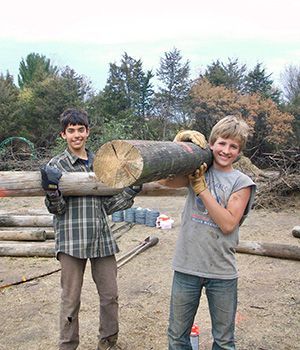
When a farm-like setting is not available, we find other ways to connect our adolescents to nature and provide them with opportunities to prove their worth, learn to work together for their survival, and connect with the adult world as contributing members. At Forest Bluff, our adolescents do this by selling crafts they have made, interacting with adults in the village at the post office and bank as they make transactions for their classroom and school, caring for the prairie and land around the school buildings each week, and planning the safety, transportation, food, equipment, finances, and service work of the three camping trips they go on each year in remote natural settings. Their trips involve working together to solve problems, survive as a group, and serve the adult world through physical work, leaving behind a real contribution with structures they build for other organizations.
On the intellectual side, the third plane of development is a time of deep reflection. Adolescents are drawn to reading and discussing literature, examining scientific ideas and the mathematical contributions of others, and expressing themselves through writing, athletics, music and other art forms. Collectively, these and the above experiences serve the question “Who am I?” with the valorization and confidence our adolescents need to develop as they enter early adulthood.
The Fourth Plane of Development (Ages 18 to 24): “What Will I Do?”
“An education capable of saving humanity is no small undertaking; it involves the spiritual development of man, the enhancement of his value as an individual, and the preparation of young people to understand the times in which they live.” (Montessori, Education and Peace)
At approximately age eighteen, if the needs of each prior phase were met, we see young adults who are confident and ready to start making their unique contributions to adult society. This is when our children branch out into communities with more knowledge and experience, as young adults themselves. This is the time for deeper, more specialized study, for helping others with unique contributions, and for instigating change in their communities. This is when you see young adults forming their political views and starting their careers in the workplace. They often want to travel to other countries and explore the world with their own two feet. It is also a time of steadier physical growth and strength.
Educational Environment for the Fourth Plane of Development
Dr. Montessori pointed out that intense study in universities and/or real work experiences in the adult world give young people what they need at this stage of life, helping them to answer their question, “What will I do?”
The Purpose of Childhood Realized
Roughly around age 24, a child’s massive job of building his or her adult self is basically completed. Modern fMRIs confirm that the first three years of life have great importance with massive brain development, and around the ages of 6, 12, 18, and 24, spurts of rapid brain change occur. In one’s mid-twenties, the brain matures, and although it continues to make and prune neuronal connections throughout its lifetime, this activity consolidates around age 25, correlating with the idea that childhood ends and adulthood begins around that time.
A child’s successful development in each plane—or stage—of life depends on the attention given to the needs and characteristics of the previous one. There is no such thing as rushing through one stage to get to the next, or skipping steps. Certainly, we continue to work on developing characteristics throughout our lives; we never stop growing and improving our abilities.
By understanding and recognizing when nature has given us the sensitivities to acquire certain attributes, and designing learning environments that meet children’s developmental needs, we give children tremendous advantage. This is how Montessori capitalizes on human development. The discovery of the Four Planes of Development and how education can match them is certainly one of Dr. Montessori’s greatest gifts to parents, educators, and our children.
Our ultimate goal is to support children to develop themselves fully in all aspects, so they will be happy, successful, and contribute to society in meaningful ways!
“If man were to grow up fully and with a sound psyche, developing a strong character and a clear mind, he would be unable to tolerate the existence of diametrically opposed moral principles within himself or to advocate simultaneously two sorts of justice – one that fosters life and one that destroys it.” (Montessori, Education and Peace)

